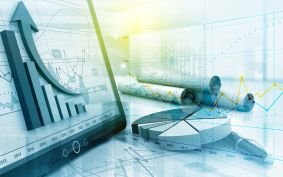Managing risk is a priority for every treasurer, but the way in which they do this is changing. Markets continue to be volatile, with a high degree of sensitivity to political events globally. Furthermore, new technologies and disruptive business models are having, and will continue to have a fundamental impact on internal business strategy and external market trends. Consequently, we observe that treasurers are moving away from the more formulaic, often siloed risk management approach of the past to a more responsive, global way of thinking. To do so, however, often requires closer alignment of treasury, finance and the wider business, and the challenge and inspiration of a trusted business partner.
Making connections
Many treasury functions have established detailed and sophisticated risk management policies, but processes and decision-making have tended to be relatively linear i.e., in a certain situation, treasury would hedge the resulting risks in a particular way. This has often had a narrow focus, taking a specific view of FX or interest rate risk in particular, often by region or individual currency, as opposed to taking a global view across a range of variables. However, a treasurer’s role is to be forward-looking, preparing the business for known and unknown situations ahead. Consequently, it makes better sense to take a more dynamic approach to risk management that reflects the global nature of business and the interconnected nature of the markets.
As treasury has become more closely integrated with the wider business, it has become better able to anticipate and prepare for changes not only to market conditions, but also the impact of technological advances, emerging business models and new competitive pressures. For example, how will the growth of electric cars and self-driving cars affect oil prices in the future, and, depending on whether a company is a producer or consumer, what could the impact be? Even companies that do not have a direct exposure to oil and gas need to consider second-order or wider trends: many currencies are closely correlated to oil prices, so companies that buy or sell in these currencies will also be affected. Brexit is another useful example. The impact is likely not only to extend to the value of GBP, but the UK and European economies could be reset. A company that manufactures in Germany and sells in the UK, compared with a company that manufactures in the UK, may be at a cost disadvantage, so it may need to consider where it locates its manufacturing in the future, or where to target sales.
Reassessing the treasury and risk organisation
By taking a more integrated, forward-looking approach to identifying, modelling and managing risk, that takes into account not only how markets may change, but also why, treasurers can make a greater contribution to the business strategy. To achieve this, they may need to take a step back to analyse their current treasury and risk management organisation, risk strategy and technology in order to determine how well equipped they are to assess this broader range of scenarios. In particular, treasurers need to be able to identify correlations and model the impact of situations that may appear to be outliers today, but that might become the new norms, and prepare accordingly. The aim is not to predict the future, but to look at the possibilities, what the direct and indirect effects might be, and to model how changes to business strategy, investment and divestment plans and capital structures may help to mitigate risks or leverage opportunities. This involves moving away from the siloed approach of many risk management functions today to take a more integrated approach. This not only applies to looking at different risks, such as FX, interest rate and commodity risk together, but also involves forming a more connected view of the business operations, strategy, capital structure, financing, risks and hedging.
Sign up for free to read the full article
Register Login with LinkedInAlready have an account?
Login
Download our Free Treasury App for mobile and tablet to read articles – no log in required.
Download Version Download Version




























